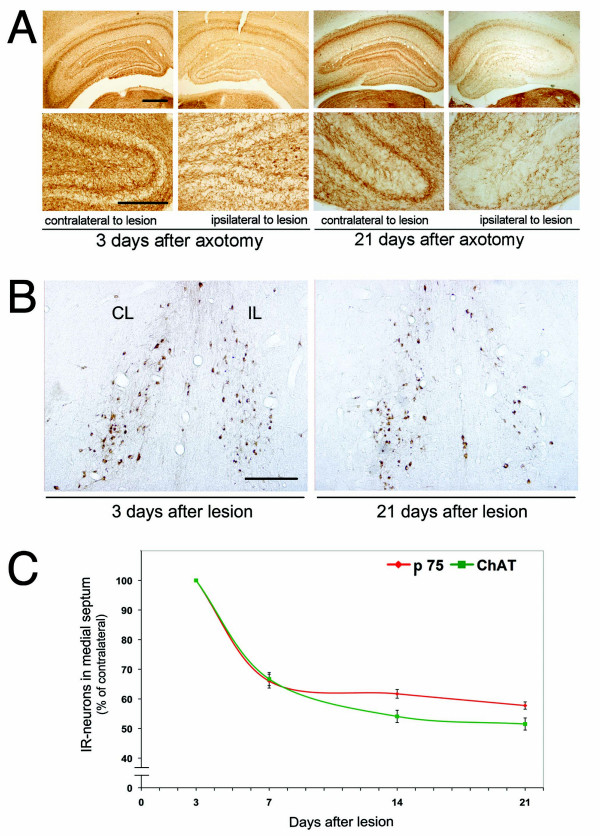Figure 1.
Effect of septo-hippocampal pathway axotomy in cholinergic septal neurons. A, Light microscopy of coronal sections stained for AChE 3 or 21 days after lesion procedure, showing the early effect of axotomy in cholinergic projections towards the hippocampus. Twenty-one days after axotomy, AChE-positive terminals are strongly reduced in the ipsilateral side of the lesion, as compared to the contralateral side (scale bar 1 mm). Inferior panels, magnification inset of AChE-positive neurites in dentate gyrus (scale bar 200 μm). B, Light microscopy of immunohistochemistry anti-ChAT in coronal sections, showing the effects of the axotomy in cell bodies of cholinergic septal neurons, 3 or 21 days after axotomy. Twenty-one days after the lesion, the number of ChAT-positive neurons is clearly reduced on the ipsilateral side of the medial septum (CL, contralateral; IL, ipsilateral. Scale bar: 1 mm). C, Time course of ChAT- and p75-positive neuron loss after axotomy. The graph shows the quantification of ChAT- or p75-immunopositive neurons in the medial septum from serial sections of brains at 3, 7, 14 and 21 days after the lesion. Note that the numbers of ChAT- and p75-immunopositive cells decay with similar kinetics but with a different slope between 7-14 days.

